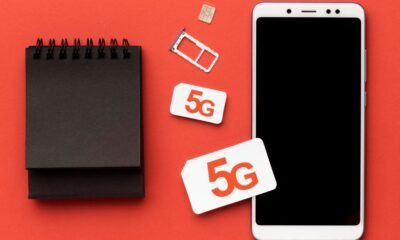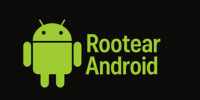BUSINESS
Toyota vs Honda: The Battle of Bulletproof Reliability

Toyota vs Honda reliability often emerges as the core debate. In today’s market, both Japanese giants boast reputations for longevity, low maintenance costs, and impressive resale value. But what really sets them apart? This article explores vehicle dependability ratings, powertrain endurance, routine servicing trends, owner experiences, and model‑specific performance to help you choose with confidence.
Understanding Brand Dependability: Toyota and Honda
Since the early 2000s, Consumer Reports and J.D. Power studies have regularly placed Toyota and Honda near the top of reliability rankings, though Toyota tends to edge out Honda in many categories According to the 2025 J.D. Power U.S. Vehicle Dependability Study, the Toyota Camry ranked highest in its midsize segment, while the Honda Accord didn’t make the top three in comparable metrics
Global studies from next‑drive show Toyota ranked second overall in dependability with a 96.1 % rating, while Honda was fifth at 96.6 % — meaning Honda occasionally edges Toyota in some metrics, but may fall behind on long‑term durability and repair severity

Engineering Philosophy: Conservative vs Innovative
Toyota applies its famed Production System—a highly structured, mistake‑proof process using lean manufacturing pillars like Andon and Poka‑Yoke—to build conservative powertrains that often exceed 200,000 or even 300,000 miles Their approach favors proven naturally aspirated engines, modest horsepower, and minimal software complexity. This restrained adoption of infotainment or driver‑assist features often results in fewer electronic failures
Honda, in contrast, embraces Kaizen and Just‑in‑Time manufacturing, with more focus on performance, agility, and motorsports‑derived tech such as turbocharged engines and i‑VTEC valve control. While that adds excitement, earlier adopters of complex transmissions and infotainment systems have sometimes seen higher failure rates in certain years—especially around 2016‑2018
Maintenance and Ownership Costs
RepairPal data shows average annual maintenance cost for Toyota at about $441, and for Honda about $428—both well below the industry average of $652 Over ten years, Toyota drivers may spend roughly $6,000 in upkeep, whereas Honda owners might spend closer to $7,200–7,500 on average
Monster repairs are less frequent for Toyota, with a lower probability of major failures (about 10% vs 12% for Honda), contributing to stronger long‑term reliability and higher resale retention—62% for a Corolla vs ~60% for Civic after five years
Model‑By‑Model Reliability Highlights
Toyota Highlights:
- Camry: Consistently tops JD Power dependability rankings; often used in taxis, with many examples reaching 300k+ miles on factory powertrains
- Corolla / Prius / RAV4 Hybrid: Recognized among most reliable models in small‑car and hybrid segments; Toyota Corolla even scores flawless dependability in some surveys
Honda Highlights:
- Accord: Known for responsive i‑VTEC engines and Civic‑like reliability; while dependable, it doesn’t quite match Camry in third‑year owner reports
- Civic / Jazz (Fit): Highly durable compact cars, frequently exceed 200k miles. Civic hybrids and manuals often praised
- CR‑V: Among the most trusted compact SUVs; affordable parts and routine servicing supported by wide network
Reliability in the Real World: Owner Feedback
Enthusiast forums and owner communities often emphasize how easy Toyota and Honda cars are to maintain. A Reddit comment sums it up:
Another contributor shared: “If you stay on top of the preventative maintenance for Hondas, they’ll last you a really long time” Both brands benefit from widespread repair familiarity and accessible spare parts—all helping reduce labor and parts costs.
Safety & Technology: Does that affect reliability?
Toyota tends to delay mass‑market adoption of advanced infotainment and driver aids until bugs are ironed out, which can translate to fewer electronics issues. Honda typically offers features like Apple CarPlay, lane‑keep assist, and enhanced safety tech in more trims—but early deployments occasionally come with software quirks
Both brands now include standard safety suites (Toyota Safety Sense and Honda Sensing), offering forward‑collision warnings, adaptive cruise, and lane‑departure alerts. Toyota often deploys these features even in base variants, while Honda offers them more selectively depending on region and trim level

Summary Table: Brand Comparison
| Category | Toyota Strengths | Honda Strengths |
|---|---|---|
| Long‑term durability | Conservative engineering, fewer major repairs | Enthusiast engines, strong 200k+ mile performance |
| Annual maintenance cost | ~$441/year (lower overall ten‑year cost) | ~$428/year (slightly cheaper per year) |
| Owner satisfaction | Top dependability scores, long warranty coverage | Often praised for driving feel and reliability |
| Model standout | Camry, Corolla, RAV4 Hybrid, Prius | Accord, Civic, CR‑V, Jazz (Fit) |
| Electronics & features | Fewer systems = fewer failures | More modern tech, earlier adoption of infotainment |
| Resale and value retention | ~62% after 5 yrs for Corolla | ~60% for Civic; strong demand for used Accords/Civics |
| Serviceability | Highly standardized parts, global support network | Widely supported, though parts sometimes pricier |
The Verdict: Toyota vs Honda Reliability
- Toyota generally retains an edge in long‑term durability, fewer high‑cost repairs, and consistency across models.
- Honda matches or sometimes exceeds Toyota in driver engagement, early reliability in simple configurations, and slightly lower annual running costs.
- In the midfield, differences are small. Many owners report Hondas lasting past 200k miles without major issues—especially with proper servicing habits.
Frequently Asked Questions
Q: Which brand has lower maintenance costs, Toyota or Honda?
A: Both brands offer low annual repairs (~$428‑441/year), but Toyota often wins on long‑term cost due to fewer major repairs over a decade
Q: Can a Honda Civic or Toyota Corolla go beyond 200,000 miles?
A: Absolutely. Both models routinely exceed this mileage with routine service. Many Toyota RAV4 and Corolla owners report engines still on original internals at 300,000 miles. Honda Civics and Accords often surpass 250,000 miles
Q: Are hybrid models more reliable than non‑hybrids?
A: Toyota’s hybrids (Prius, RAV4 Hybrid, Camry Hybrid) have proven stalwart; many cross 200k–300k miles without battery replacement. Honda’s hybrids are improving but historically less tested long‑term
Q: Do newer models from Honda suffer from reliability issues?
A: Some recent turbocharged engines and infotainment systems in Hondas (circa 2016‑2018) saw higher issue rates. But recent redesigns and improved manufacturing have largely resolved those concerns
Q: Which models offer better resale value in Pakistan or similar markets?
A: Toyota tends to maintain better resale value due to a stronger service network, cheaper and more available parts, and reliability reputation. Honda remains competitive, especially with lower depreciation on popular models like Civic and Accord
Conclusion
In the Toyota vs Honda reliability showdown, the winner depends on what you prioritise. Toyota delivers unwavering consistency, conservative engineering, mass‑market coverage, and often lower total cost of ownership. Honda brings innovation, engaging performance, slightly cheaper annual maintenance, and strong reputation in select models.
BUSINESS
Artfine: Unleashing the Inspiring Power of Modern Art

Artfine is more than just a buzzword in the creative world—it’s a movement, a platform, and a philosophy that’s changing how we experience, buy, and appreciate art. If you’ve ever wondered how to find authentic US artwork, get the best deals with a Fine Art America coupon, or simply want to understand the difference between art and fine art, you’re in the right place. In this deep dive, we’ll explore everything you need to know about Artfine, from its impact on the art market to practical tips for collectors and creators.
What Is Artfine? The New Face of Art and Fine Art
Artfine isn’t just another online gallery or marketplace. It’s a curated ecosystem where artists, collectors, and enthusiasts come together to celebrate creativity in all its forms. Whether you’re searching for “art for u” or looking to invest in high-value pieces, Artfine bridges the gap between traditional fine art and the digital age.
But what sets Artfine apart? It’s the commitment to authenticity, accessibility, and innovation. In a world where art can sometimes feel exclusive or intimidating, Artfine makes it approachable for everyone.
The Evolution of Art and Fine Art in the Digital Era
Art and Fine Art: What’s the Difference?
Let’s clear up a common confusion: art and fine art aren’t always the same thing. Art is a broad term that covers everything from street murals to digital illustrations. Fine art, on the other hand, refers to works created primarily for their aesthetic value—think paintings, sculptures, and photography.
Artfine recognizes the value in both. By showcasing a diverse range of US artwork, the platform ensures that every style, medium, and voice has a place to shine.
How Artfine Is Changing the Game
In 2025, the art world is more connected than ever. Artfine leverages technology to bring artists and buyers together, no matter where they are. With features like virtual galleries, live auctions, and direct artist messaging, it’s never been easier to discover and own art that speaks to you.
US Artwork: Celebrating Diversity and Innovation
The Rise of American Artists on Artfine
The US has always been a melting pot of creativity. From the bold colors of New York street art to the serene landscapes of the Midwest, US artwork reflects a rich tapestry of cultures and perspectives. Artfine’s curated collections highlight both emerging and established American artists, making it a go-to destination for anyone seeking authentic US artwork.
Real-Life Example: An Artist’s Journey
Take the story of Maya, a self-taught painter from Chicago. She started sharing her work on Artfine in 2023, hoping to reach a wider audience. Within months, her abstract pieces caught the eye of collectors across the country. “Artfine gave me a platform to connect with people who truly appreciate my art,” she shared. “It’s more than just sales—it’s about building a community.”
How to Buy Art for U: A Beginner’s Guide
Finding the Perfect Piece
Looking for art for u can feel overwhelming, especially with so many options out there. Artfine simplifies the process with intuitive search filters, expert recommendations, and personalized suggestions based on your taste.

Tips for First-Time Buyers
- Set a budget: Artfine offers pieces at every price point, so you don’t have to break the bank.
- Explore different styles: From modern abstracts to classic landscapes, there’s something for everyone.
- Ask questions: Use the platform’s messaging feature to connect directly with artists.
User Quote: The Joy of Discovery
One user recently commented, “I never thought I’d find a piece that felt so personal. Artfine made it easy to browse, compare, and even chat with the artist before buying. It’s like having a personal art advisor in your pocket.”
Fine Art America Phone Number: Customer Support That Cares
Why Customer Service Matters
When investing in art, trust is everything. That’s why platforms like Fine Art America and Artfine prioritize responsive, knowledgeable customer support. Whether you need help with an order, want to track a shipment, or have questions about authenticity, having access to a real person makes all the difference.
How to Reach Out
While Artfine has its own dedicated support team, many art lovers also search for the Fine Art America phone number for quick assistance. Both platforms offer multiple ways to get in touch—phone, email, and live chat—ensuring your questions never go unanswered.
Fine Art America Coupon: Saving on Your Next Masterpiece
The Power of a Good Deal
Who doesn’t love a discount? If you’re shopping for art online, a Fine Art America coupon can make your dream piece more affordable. Artfine regularly partners with artists and galleries to offer exclusive deals, seasonal sales, and limited-time promotions.
How to Find and Use Coupons
- Sign up for newsletters: Get the latest deals delivered straight to your inbox.
- Check the homepage: Artfine often features current promotions front and center.
- Follow on social media: Flash sales and coupon codes are frequently shared with followers.
Expert Tip
Always read the fine print. Some coupons may only apply to certain categories or have expiration dates. If you’re unsure, reach out to customer support for clarification.
Artfine Features and Usability in 2025
What Makes Artfine Stand Out?
- Curated Collections: Handpicked works from top artists and rising stars.
- Virtual Galleries: Explore art in immersive, 3D environments.
- Secure Payments: Multiple options, including crypto and traditional methods.
- Community Forums: Connect with other art lovers, share tips, and join discussions.
Pros and Cons of Using Artfine
Pros:
- Wide selection of art and fine art
- User-friendly interface
- Direct artist communication
- Regular discounts and promotions
Cons:
- Some exclusive pieces may have higher price tags
- Limited physical gallery locations (mostly online)
- Occasional shipping delays for international orders
Art and Fine Art: Investing in Creativity
Why Invest in Art?
Art isn’t just about aesthetics—it’s an investment in culture, history, and even your own well-being. Studies show that surrounding yourself with art can boost mood, spark creativity, and create a sense of belonging.
Risks to Consider
Like any investment, art comes with risks. Market trends can shift, and not every piece will appreciate in value. That’s why platforms like Artfine emphasize transparency, provenance, and expert guidance.
The Future of Artfine: Trends to Watch in 2025
Digital Art and NFTs
The rise of digital art and NFTs has transformed the market. Artfine embraces these innovations, offering a seamless way to buy, sell, and display digital works alongside traditional media.
Sustainability and Ethical Sourcing
More buyers are asking about the origins of their art. Artfine partners with artists and galleries committed to ethical practices, ensuring every purchase supports creators and communities.
Global Reach, Local Impact
While Artfine connects buyers and artists worldwide, it also supports local art scenes through pop-up events, workshops, and collaborations.
FAQs
Q. What is Artfine and how does it differ from other art platforms?
A. Artfine is a curated online marketplace for art and fine art, featuring US artwork and global pieces. Unlike some platforms, it emphasizes direct artist connections, virtual galleries, and a community-driven approach.
Q. How can I contact customer support? Is there a Fine Art America phone number?
A. You can reach Artfine’s support team via email, live chat, or phone. For those looking for the Fine Art America phone number, it’s typically listed on their official website under the “Contact Us” section.
Q. Are there ways to save money, like using a Fine Art America coupon?
A. Absolutely! Artfine and similar platforms frequently offer coupons, seasonal sales, and exclusive deals. Sign up for newsletters and follow on social media to stay updated.
Q. What’s the best way to find US artwork or art for u on Artfine?
A. Use the platform’s search filters to browse by location, style, or artist. Personalized recommendations and curated collections make it easy to discover art that fits your taste.
Final Thoughts
Artfine is more than just a marketplace—it’s a movement that’s making art accessible, enjoyable, and meaningful for everyone. Whether you’re a seasoned collector or just starting your journey, Artfine offers the tools, community, and inspiration you need to make art a part of your life.
BUSINESS
Who Owns Pinterest? Surprising Power Facts Revealed – 5

who owns Pinterest, it helps to know where it all began. Pinterest was founded in December 2009 by Ben Silbermann, Paul Sciarra, and Evan Sharp. The platform officially launched in March 2010, quickly gaining traction as a visual bookmarking tool that let users “pin” images and ideas to virtual boards.
The idea was simple but powerful: create a space where people could collect and organize inspiration from across the web. In the early days, Pinterest was invite-only, which only fueled curiosity and demand.
“I remember waiting weeks for my Pinterest invite back in 2011. It felt like joining a secret club for creative people.”
Pinterest Headquarters: Where the Magic Happens
The Pinterest headquarters is located in San Francisco, California. The company’s main office is a reflection of its brand—open, creative, and filled with inspiration. Over the years, Pinterest has expanded globally, but its heart remains in the Bay Area.
If you ever visit the Pinterest headquarters, you’ll notice walls covered in user-generated art, collaborative workspaces, and a culture that encourages innovation. It’s a far cry from the typical corporate tech office.
Who Owns Pinterest in 2025? The Current Ownership Structure
Public Company Status
Pinterest went public in April 2019, trading on the New York Stock Exchange under the ticker symbol PINS. This means that, technically, Pinterest is owned by its shareholders. Anyone who buys Pinterest stock owns a small piece of the company.
Major Shareholders and Institutional Investors
As of 2025, the largest shareholders of Pinterest are a mix of institutional investors, mutual funds, and individual stakeholders. Some of the biggest names include Vanguard Group, BlackRock, and Morgan Stanley. These firms manage large portfolios and often hold significant stakes in major tech companies.
Ben Silbermann, one of the original founders, stepped down as CEO in 2022 but remains involved as Executive Chairman. The day-to-day operations are now led by a new CEO, but the founders’ vision still shapes the company’s direction.
Is Pinterest Owned by Another Company?
No, Pinterest is not owned by another tech giant like Google or Facebook. It remains an independent, publicly traded company. There have been rumors over the years about potential acquisitions, but as of 2025, Pinterest stands on its own.
If you want to learn more about Pinterest’s stock and financials, the company’s investor relations page is a great resource.
Is Pinterest Social Media or a Social Network?
The Ongoing Debate
A common question is: is Pinterest social media or something else entirely? The answer isn’t as straightforward as you might think.
Pinterest is often grouped with social media platforms like Facebook, Instagram, and Twitter. However, its core function is different. While you can follow users, comment, and share content, Pinterest is primarily a visual discovery engine. It’s about finding ideas, not just connecting with friends.
Is Pinterest a Social Network?
Technically, yes—is Pinterest a social network is a valid question. Pinterest has social features, but it’s less about personal updates and more about shared interests. Users connect through common passions, whether that’s home decor, fashion, or travel.
In 2025, Pinterest has leaned even further into its role as a search and discovery platform, using AI to personalize recommendations and help users find exactly what they’re looking for.
How Pinterest Makes Money: The Business Model Explained
Advertising and Promoted Pins
Pinterest’s main source of revenue is advertising. Businesses pay to promote their pins, targeting users based on interests, search history, and demographics. This model has proven highly effective, especially for brands in lifestyle, retail, and e-commerce.

Shopping and E-Commerce Integration
In recent years, Pinterest has expanded its shopping features, allowing users to buy products directly from pins. This seamless integration has made Pinterest a powerful tool for both consumers and businesses.
If you’re interested in how to use Pinterest for business, explore our guide to Pinterest marketing.
Real-Life Example: How Pinterest Inspires and Connects
“I started a small jewelry business during the pandemic, and Pinterest was my secret weapon. My designs went viral, and I connected with customers from around the world. It’s more than just a social network—it’s a launchpad for creativity.”
Stories like this are common. Pinterest isn’t just a place to collect ideas; it’s a platform that empowers users to turn inspiration into action.
Pinterest Headquarters: A Hub of Innovation
Inside the San Francisco Office
The Pinterest headquarters is more than just an office—it’s a creative hub. Employees, known as “Pinployees,” work in an environment designed to foster collaboration and innovation. From brainstorming sessions to user research labs, the headquarters is where new features and ideas come to life.
Global Expansion
While San Francisco remains the main base, Pinterest has offices in cities like New York, London, and Tokyo. This global presence helps Pinterest understand and serve its diverse user base.
When Was Pinterest Made? A Timeline of Growth
- 2009: Pinterest is founded by Ben Silbermann, Paul Sciarra, and Evan Sharp.
- 2010: The platform launches in closed beta.
- 2011: Pinterest opens to the public and quickly gains millions of users.
- 2019: Pinterest goes public on the NYSE.
- 2022: Ben Silbermann steps down as CEO.
- 2025: Pinterest continues to innovate, with over 500 million monthly active users worldwide.
The Pros and Cons of Pinterest in 2025
Pros
- Inspiration at your fingertips: From recipes to home decor, there’s something for everyone.
- Powerful search and discovery: AI-driven recommendations make finding ideas easy.
- Business opportunities: Great for brands, creators, and small businesses.
- Positive community: Less negativity compared to other social platforms.
Cons
- Copyright concerns: Some users upload content without proper credit.
- Algorithm changes: Can affect visibility for creators and businesses.
- Time-consuming: It’s easy to lose hours scrolling through pins!
Risks and Safety: What Users Should Know
Privacy and Data
Pinterest collects user data to personalize recommendations and ads. While the company has strong privacy policies, users should always review settings and be mindful of what they share.
Copyright and Content Ownership
If you’re pinning original content, make sure you understand Pinterest’s copyright policies. The platform encourages proper attribution and has tools for reporting copyright violations.
Pinterest in 2025: What’s Next?
AI and Personalization
Pinterest is investing heavily in AI to improve search, recommendations, and shopping experiences. Expect even smarter tools for finding and organizing ideas.
Sustainability and Social Impact
Pinterest has launched initiatives to promote sustainability, diversity, and mental health. The platform is working to create a positive, inclusive space for all users.
New Features
From AR-powered shopping to enhanced video content, Pinterest is constantly evolving. Stay tuned for updates that make the platform even more useful and engaging.
FAQs
Q. Who owns Pinterest right now?
A. Pinterest is a publicly traded company, owned by its shareholders. Major institutional investors like Vanguard and BlackRock hold significant stakes, but no single entity owns Pinterest outright.
Q. Where is Pinterest headquarters located?
A. Pinterest headquarters is in San Francisco, California, with additional offices in major cities worldwide.
Q. Is Pinterest social media or a social network?
A. Pinterest is both a social media platform and a social network, but it’s primarily a visual discovery engine focused on inspiration and ideas.
Q. When was Pinterest made?
A. Pinterest was founded in December 2009 and launched to the public in March 2010.
The Bottom Line
Understanding who owns Pinterest isn’t just about satisfying curiosity—it’s about knowing how the platform operates, who makes the decisions, and what the future might hold. As Pinterest continues to grow and innovate, its ownership structure ensures that it remains accountable to users, investors, and the broader community.
BUSINESS
Toyota Hilux: Built for the Tough Beyond

Toyota Hilux has long symbolized rugged reliability and unmatched resilience in the pickup truck segment, earning global acclaim for its legendary durability. This article explores the Hilux’s engineering excellence, torque-rich powertrains, off‑road capabilities, advanced safety systems, and real‑world versatility—providing a comprehensive view beyond mere performance specs.
Heritage of Durability and Reliability
Dating back to its early IMV platform roots, the Hilux has consistently proven its toughness under severe abuse. Such reputation was cemented by iconic tests on Top Gear, where a battered 1988 Hilux survived beach immersion, demolition site drops, and even fire, yet still ran with minimal repair Similarly, modified Hilux trucks by Arctic Trucks conquered Antarctica’s South Pole and Icelandic volcano terrain, underscoring its off‑road grit .
With Toyota’s ladder‑frame chassis and reliable 2.8‑litre diesel engines, the pickup remains a trusted companion in expedition, construction, agriculture, and even paramilitary applications across harsh climates

Powertrain Options & Towing Capacity
Modern editions offer impressive performance:
- 2.8 L turbo diesel (GD engine) delivering around 204 hp and 500 Nm of torque in standard trims, and boosted output up to 550 Nm in GR Sport variants
- 2.7 L petrol engine providing around 164–166 hp with 245 Nm torque for regions favoring gasoline
- Hybrid option with mild‑hybrid V‑Active 48‑V system improving fuel efficiency by up to 20% over traditional engines
The maximum towing capacity is approximately 3,500 kg, while payload capabilities hover close to 1,000–1,030 kg, depending on trim and configuration Enthusiasts report torque-rich diesel delivery and smooth automatic transmissions with Sport mode responsiveness
Off-Road Capability and Terrain Handling
Built for challenging conditions, the Hilux is engineered with:
- Part‑time four‑wheel drive with high- and low-range gearing for sand, mud, snow, and inclines
- Locking rear differential, active traction control, hill descent control, and multi‑terrain select modes on higher trims
- Ground clearance around 310 mm, and wading depth up to 700 mm for volcanic mud, streams, and river fording
Such engineering makes the Hilux capable of rock crawling, steep desert dunes, logging roads, and even polar missions — underlining its global reputation in exploration and expedition circles
Interior Comfort & Cab Design
Despite its workhorse roots, the interior balances utility with creature comforts:
- A spacious cabin with 60/40 rear seat split, deep centre console, trench storage under AC controls, and double glove box configuration
- 8‑inch touchscreen infotainment supporting Apple CarPlay and Android Auto, available across mid and high trims
- Higher trims feature leather upholstery, powered driver seat, heated seats, dual-zone climate control, and integrated rear air vents for passenger comfort
- Practical storage: door pockets, cooled glove box, cup holders, and console bins for utility users
Safety Systems & Driver Assistance
Hilux models are equipped with robust safety tech, including:
- Seven airbags, ABS / EBD, vehicle stability control (ESC), trailer-sway control, and ISOFIX mounts
- Toyota Safety Sense suite featuring adaptive cruise control, pre‑collision braking, lane departure alert with steering assist, cyclist/pedestrian detection, and road sign recognition
- On higher trims, 360° camera, blind‑spot monitoring, and rear cross‑traffic alert enhance visibility in tight manoeuvres
ANCAP safety tests award current Hilux models a full five‑star rating, while European NCAP results remain competitive with four stars for earlier models
Performance & Ride Quality
- On paved roads, Hilux offers firm steering feedback, solid highway stability, and weighty confidence—but feels bulky in tight city scenarios, with a large turning radius
- Rear leaf-spring suspension can feel stiff or bouncy when unloaded, but smooths out under load and tackles potholes well with large 265/60 R18 tyres
- Tuned suspension in GR Sport and V‑Active trims provides better ride comfort and reduced NVH (noise, vibration, harshness) especially in mild‑hybrid versions
Global Market Variants & Regional Comparisons
Available in multiple trims worldwide—from WorkMate and SR through SR5, Rogué, up to GR Sport—the Hilux adapts to commercial, adventure and luxury segment
In Pakistan, pricing ranges roughly from PKR 1.1 to 1.54 crore depending on trim and features Globally, it competes with rivals like the Ford Ranger, Isuzu D‑Max, Nissan Navara and Volkswagen Amarok. While those competitors may offer sharper on‑road handling or upscale cabin finishes, Hilux consistently leads in reliability, resale value, and rugged performance .

Frequently Asked Questions (FAQs)
What engine options does the Hilux offer?
You’ll find a 2.8 L turbo diesel delivering about 204 hp and 500–550 Nm torque, a 2.7 L petrol with ~166 hp/245 Nm, and some mild‑hybrid V‑Active versions in certain markets.
How much can the Hilux tow and carry?
Maximum towing capacity generally reaches 3,500 kg, with payloads up to 1,000–1,030 kg depending on variant.
What safety features are available?
Hilux includes Toyota Safety Sense—adaptive cruise control, pre‑collision braking, lane assist, pedestrian detection—as well as ESC, hill descent assist, seven airbags, and optional 360° cameras and blind‑spot monitoring.
Is Hilux good off‑road?
Absolutely. With 4WD high/low range, locking differential, hill descent control, multi-terrain select, and ground clearance exceeding 300 mm, it’s designed for challenging terrain.
How reliable is the Hilux long term?
Its reputation is legendary. It has survived severe durability tests, polar expeditions, and decades of heavy use with minimal failure—often dubbed the “AK‑47 of pickups” for reliability
Conclusion
The Toyota Hilux: Built for the Tough Beyond is more than just a vehicle—it’s a legacy of engineering resilience, off‑road mastery, and adaptable utility. From rugged design and torque-rich engines to advanced safety systems and trusted global reliability, it embodies an uncompromising blend of performance and durability
-

 BLOG4 weeks ago
BLOG4 weeks agoSending Audio on Signal: Quick Guide
-

 TECH3 weeks ago
TECH3 weeks agoUsing AirTag with Android: Explained
-

 BLOG3 weeks ago
BLOG3 weeks agoWoven Comfort: The Art of Furniture Fabrics
-

 TECH3 weeks ago
TECH3 weeks agoAndroid No SIM Error: Fast Fix Guide
-

 TECH3 weeks ago
TECH3 weeks agoAndroid System Intelligence: Smarter Tech Behind the Scenes
-

 TECH2 weeks ago
TECH2 weeks agoPower at a Distance: Mastering the Remote Control Excavator
-

 BLOG3 weeks ago
BLOG3 weeks agoNext-Gen Play: Unlocking Android Gaming Panels
-

 BLOG2 weeks ago
BLOG2 weeks agoHow to Support a Loved One Dealing With Anger Challenges
